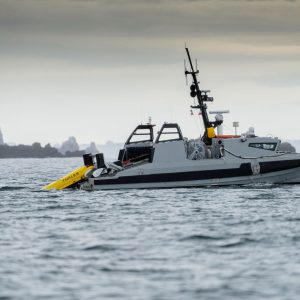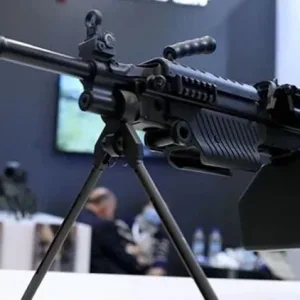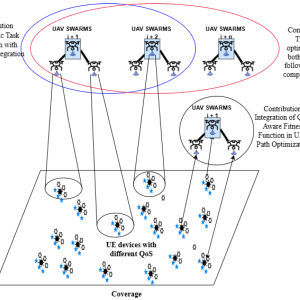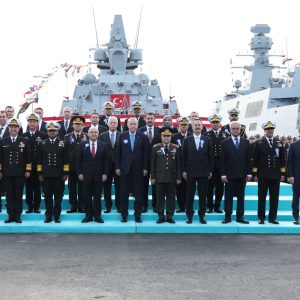The Pentagon has recently issued a call for proposals aimed at developing Swarming Attack Drones that Might Deter Potential Taiwan Invasion. This move underscores the United States’ commitment to maintaining military superiority and deterring aggression in the Indo-Pacific region.
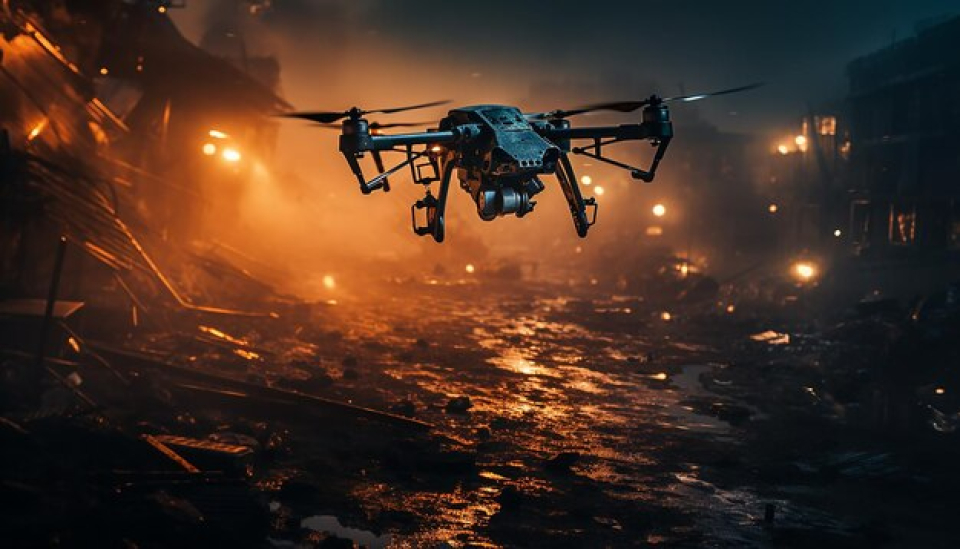
Understanding the Need for Swarming Attack Drones
In an era marked by rapid technological advancements and evolving geopolitical dynamics, traditional warfare tactics are being redefined. The emergence of unmanned aerial vehicles (UAVs) has revolutionized the battlefield, offering unparalleled versatility and precision. However, the concept of swarming drones takes this innovation to new heights.
The Threat Landscape in the Indo-Pacific Region
The Indo-Pacific region is witnessing heightened tensions, particularly concerning China’s increasingly assertive behavior and territorial claims, including those over Taiwan. The Taiwan Strait has become a potential flashpoint, with Beijing refusing to rule out the use of force to reunify Taiwan with the mainland.
The Role of Swarming Attack Drones in Modern Warfare
Swarming attack drones represent a paradigm shift in military strategy, leveraging the power of autonomous and coordinated systems to overwhelm adversaries. By deploying large numbers of drones that can operate collaboratively and adaptively, military forces can achieve superiority on the battlefield while minimizing risks to human personnel.
Key Objectives of the Pentagon’s Initiative
The Pentagon’s call for swarming attack drones is driven by several strategic objectives aimed at enhancing deterrence capabilities and maintaining regional stability.
Enhancing Deterrence Against Aggression
The primary goal of this initiative is to bolster the United States deterrence posture in the Indo-Pacific region, sending a clear message to potential adversaries that any aggressive action, including a Taiwan invasion, will be met with a swift and decisive response.
Mitigating Risks to Military Personnel
Swarming attack drones offer a cost-effective solution for conducting high-risk missions without endangering the lives of military personnel. By leveraging autonomous capabilities, these drones can penetrate enemy defenses and neutralize threats with minimal human intervention.
Demonstrating Technological Superiority
By investing in cutting-edge technologies such as swarming attack drones, the United States reaffirms its commitment to maintaining technological supremacy on the battlefield. This initiative is a testament to the nation’s innovative prowess and ability to stay ahead of emerging threats.
Key Requirements for Swarming Attack Drone Proposals
The Pentagon’s call for proposals outlines several key requirements that prospective contractors must meet to develop swarming attack drones capable of deterring a Taiwan invasion effectively.
Autonomous Swarm Coordination
Proposals must demonstrate the ability to develop autonomous swarm coordination algorithms that enable drones to communicate, collaborate, and execute complex missions with minimal human oversight. This capability is essential for ensuring the effectiveness and scalability of swarming attacks.
Distributed Sensor Fusion
To enhance situational awareness and target acquisition capabilities, swarming attack drones must incorporate distributed sensor fusion technologies. By fusing data from multiple sources, including radar, electro-optical, and infrared sensors, these drones can precisely identify and prioritize targets.
Resilient Communication Networks
Robust and resilient communication networks are critical for maintaining connectivity and coordination among swarming attack drones, especially in contested and degraded environments. Proposals should address the challenges of operating in electromagnetically congested areas and provide solutions for ensuring uninterrupted communication.
Lethal and Non-Lethal Payload Options
Swarming attack drones must be equipped with versatile payloads capable of engaging both kinetic and non-kinetic targets. This includes the ability to deliver precision-guided munitions, electronic warfare payloads, and counter-UAV measures to neutralize threats effectively while minimizing collateral damage.
Implications for Regional Security and Stability
The development and deployment of swarming attack drones have far-reaching implications for regional security and stability in the Indo-Pacific.
Deterrence Against Aggression
By enhancing deterrence capabilities, swarming attack drones can help deter potential adversaries from engaging in aggressive actions, thereby reducing the likelihood of conflict escalation and promoting peaceful resolution of disputes.
Reinforcing Alliances and Partnerships
The United States’ commitment to developing advanced military capabilities strengthens its alliances and partnerships in the Indo-Pacific region. By collaborating with like-minded nations, the U.S. can foster interoperability and collective security efforts to counter common threats effectively.
Shaping the Future of Warfare
Swarming attack drones represent just one example of the technological innovations reshaping the future of warfare. As military capabilities continue to evolve, nations must adapt their strategies and investments to maintain strategic advantage in an increasingly complex and contested environment.
Conclusion
The Pentagon’s call for swarming attack drones underscores the critical importance of staying ahead of emerging threats and maintaining military superiority in the Indo-Pacific region. By investing in cutting-edge technologies and fostering collaborative partnerships, the United States reaffirms its commitment to deterring aggression, promoting stability, and shaping the future of warfare. As the global security landscape continues to evolve, swarming attack drones will play a pivotal role in safeguarding peace and security in an increasingly uncertain world.







